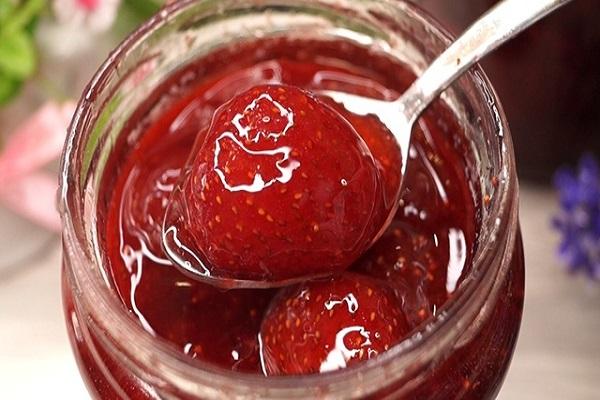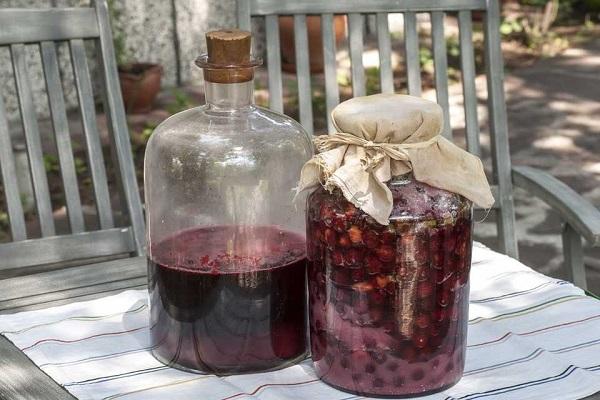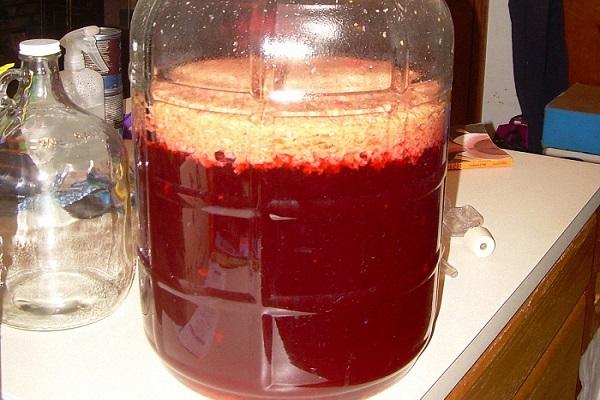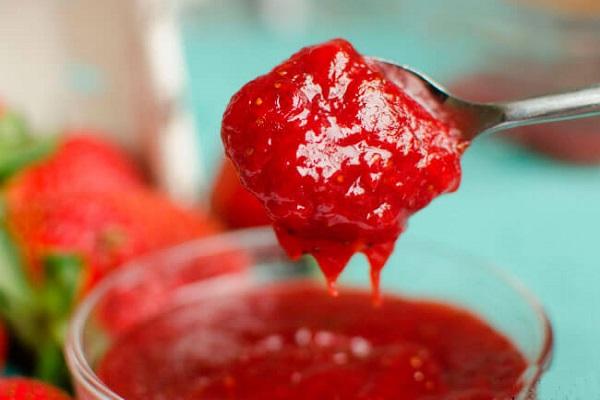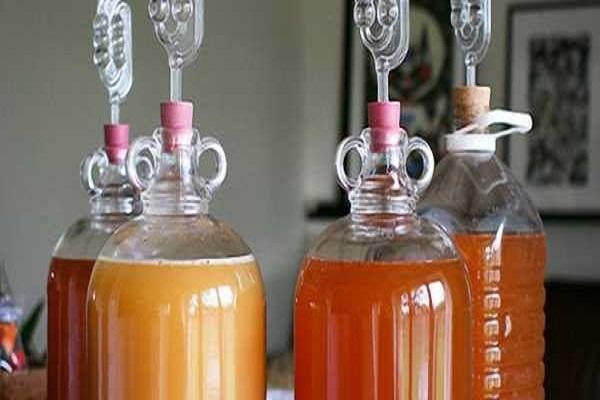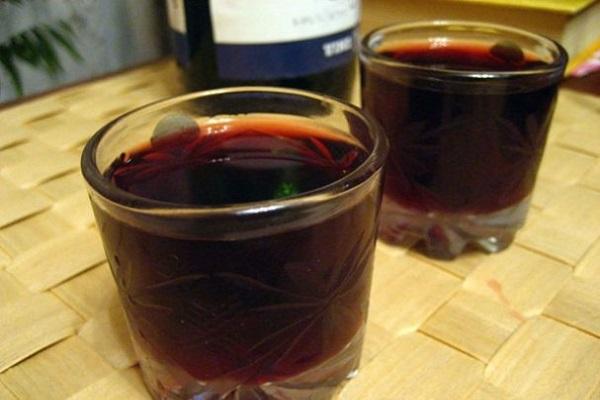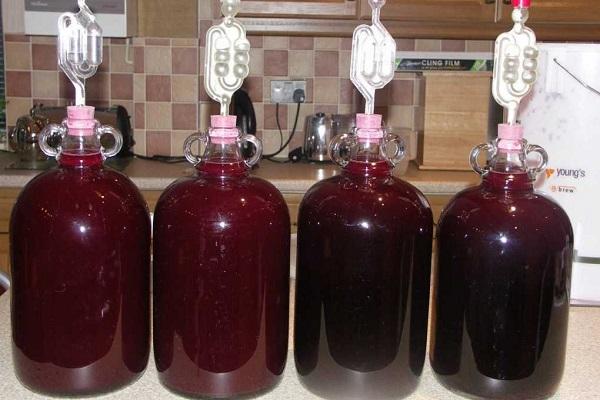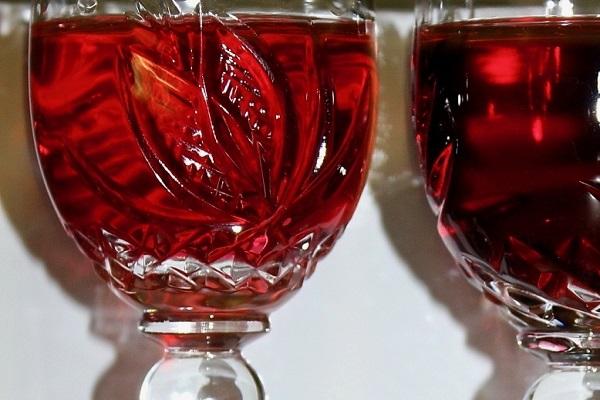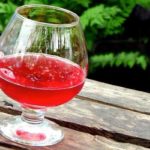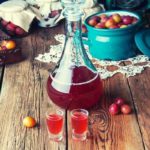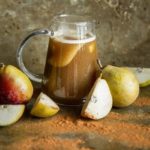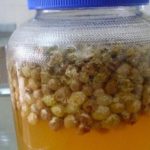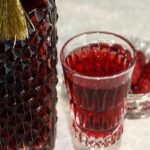Many people prepare homemade alcoholic drinks from berries and fruits, but wine made from jam is much less common, although it turns out to be quite pleasant in taste, which depends on the material used. The aroma is also transmitted from the starting material, so it is recommended to make wine from one type of jam, rather than mixing different ones, which will interrupt each other.
Subtleties of making wine from jam
At home, a wine drink is usually made from soured, old jam or covered with a layer of frozen sugar syrup. You can, of course, eat a fresh delicacy brewed this or last year, but this is not necessary. This dessert is perfect for tea drinking, as a filling for pies, pies, and rolls.
Preparing wine is quite simple. Before adding the wort, the starting material is thoroughly mixed with water. Sugar is not added, since there is already enough of it, but raisins, rice, and yeast are additionally used for the fermentation process.
Requirements for the main ingredient
Wine can be made from jam. They can contain any fruit. The only requirement for the source material is that it should not be moldy.
If the sweet product turns sour, then it’s okay, because, according to technology, the wine drink goes through a fermentation stage. But if mold appears on the surface of a fruit treat, it is better not to use it, because the moldy smell will be transferred to the alcoholic drink, even though the mold has been removed. It also has the ability to decompose wine into water and carbon dioxide.
How to make wine from jam at home
To obtain good wine, the main thing is to properly prepare the container for fermentation and maturation. The best option for these purposes would be a glass bottle.
An enamel pan or tank is suitable, but this is for large volumes, but for jam it is still better to use a bottle or a three-liter jar.
The containers and all equipment are washed well and doused with boiling water or sterilized to prevent pathogenic bacteria from getting into the drink. Stir the wort using a wooden spatula or a spoon with a long handle.
Wine is prepared from different jams; the preparation technology may also differ slightly, as well as the time spent from the start of the production of the drink to the finished product. In any case, use a water seal. This could be a nylon cap with a rubber tube, a cotton plug, or a medical glove, which is used most often. A balloon is suitable for a narrow neck.
From raspberry jam
The wine made from raspberry jam is bright, dark pink in color, with a subtle raspberry aroma.
Ingredients:
- A liter jar of raspberry jam, jam or thin jam.
- A liter of boiled, warm water.
- 5 tablespoons light raisins.
Cooking process:
- Place all products in a three-liter jar, do not wash the raisins. Cover the thoroughly mixed contents with gauze and place in a dark, warm place for a week and a half.
- After this, remove the floating pulp, strain the wort, and pour into a clean bottle. Place the jar with a glove placed over the neck of the container for about another six weeks in the same place. Pierce several fingers of the glove with a needle.
- While the wort ferments, the glove will remain inflated like a balloon. The moment it falls, fermentation will stop.
- Now the drink must be carefully poured into bottles without disturbing the sediment. The container must be filled completely. Send the drink to the basement for several months to infuse and develop the taste and aroma.
From strawberry jam
Surprisingly, wine made from fermented strawberry jam tastes quite pleasant. Its preparation is slightly different from the previous recipe.
Required components:
- A liter of fermented strawberries.
- The same amount of warm boiled water.
- One and a half glasses of sugar + another half glass.
- Dessert spoon of unwashed raisins.
Dissolve the jam and the first part of the sugar in warm water, add the raisins, mix well. A three-liter bottle is suitable for this amount of ingredients. Put a rubber medical glove on top of it, pricking a couple of fingers in it with a needle.
The bottle is kept in a warm place, protected from light, for the entire fermentation period of the wort. This will take several weeks. All this time, the glove will be filled with carbon dioxide released during the fermentation process. When the glove is deflated, fermentation stops.
At the next stage, the wort must be strained through three layers of gauze, add the second part of sugar, mix, bottle, and close. Place in a cool place for three or four months.
After clarification and precipitation, the wine is carefully drained, corked, and stored in the basement.
Apple
You can make wonderful dry or semi-dry wine from apple raw materials.
Required:
- 1.5 liters of apple jam;
- 1.3 liters of purified water;
- a glass of light raisins.
For such a quantity of raw materials you will need a five-liter bottle. Combine all the ingredients of the future drink in it, mix well. Cover with gauze folded in four layers and place in a dark, warm place for five days. Stir the contents of the bottle daily with a long-handled wooden spoon.
After this, collect the pulp that has risen to the top, strain the wort into a clean bottle, and put on a medical glove with a punctured finger. Place in the same place for fermentation until it finishes.
Remove the clear wine material from the sediment, taste it, if it is too sour, you can sweeten it to taste. Then keep the drink for a couple more days in a dark place.
Take the spilled, capped wine to the basement and observe the appearance of sediment, from which the drink must be removed periodically. When the sedimentation of wine impurities stops, the wine is ready to drink.
Apricot
You can make wine from apricot jam using the same technology as apple wine. Its color is amber, with a golden tint.
Simple recipe without yeast
As a basis for wine without yeast, you can make a drink from raspberry jam, replacing the base with any other. A very tasty dessert drink is made from pitted cherry jam, which has a bright, ruby color.
Currant jam with rice
Rice-based wine is stronger than raisin wine, a kind of Japanese sake.
Required Products:
- 1.5 liters of currant jam;
- 4.5 liters of water;
- 1.5 cups round rice.
You need to start making wine by mixing the ingredients. If the berry is whole, then it must be mashed. The resulting mixture is placed in a bottle under a water seal and sent to a dark room for a month.
After this, the drink is poured into three-liter jars, which are left open for a day in the same room. After this time, you can take a sample. The wine, dark ruby in color, has a tart taste.
Quick two week recipe
Using this simple recipe, wine can be prepared in just 2 weeks, and it will taste good, with a fruity aroma, and most importantly, from natural products, without any chemicals. The accelerated cooking process is due to the use of yeast and rice, as well as sour jam.
Ingredients for preparation:
- 1.5 liters of fermented jam.
- 1.5 liters of warm boiled water.
- 1.5 cups round rice.
- A small packet of dry yeast.
- A tablespoon of sugar.
First, mix the yeast with sugar and a small amount of water in a glass. While the activation process is taking place, mix the jam with unwashed rice, add water, and mix thoroughly. Pour the yeast into the resulting mixture and stir.
Put a rubber medical glove on the neck of the bottle and prick three fingers with a needle. Place the vessel in a dark, warm room for 12 days. Once the wine has become clear, place it in the refrigerator for a couple of days.
Strain the finished drink, taste it, and sweeten it if necessary. Pour into bottles, close, and take to the basement.
On a note! When making wine with yeast, you can use not only one type of jam, but also mix several types of sweet preparations.
Drink storage rules
It is advisable to store any alcoholic drink in a cool place.
A basement or cellar is suitable for this; if you have small supplies, a refrigerator will also do.
The finished product is poured into glass containers: bottles, jars, carboys of various sizes. When filling the container, they try to pour the drink right up to the lid or as completely as possible, so that there is no room left for the release of carbon dioxide and further fermentation.

